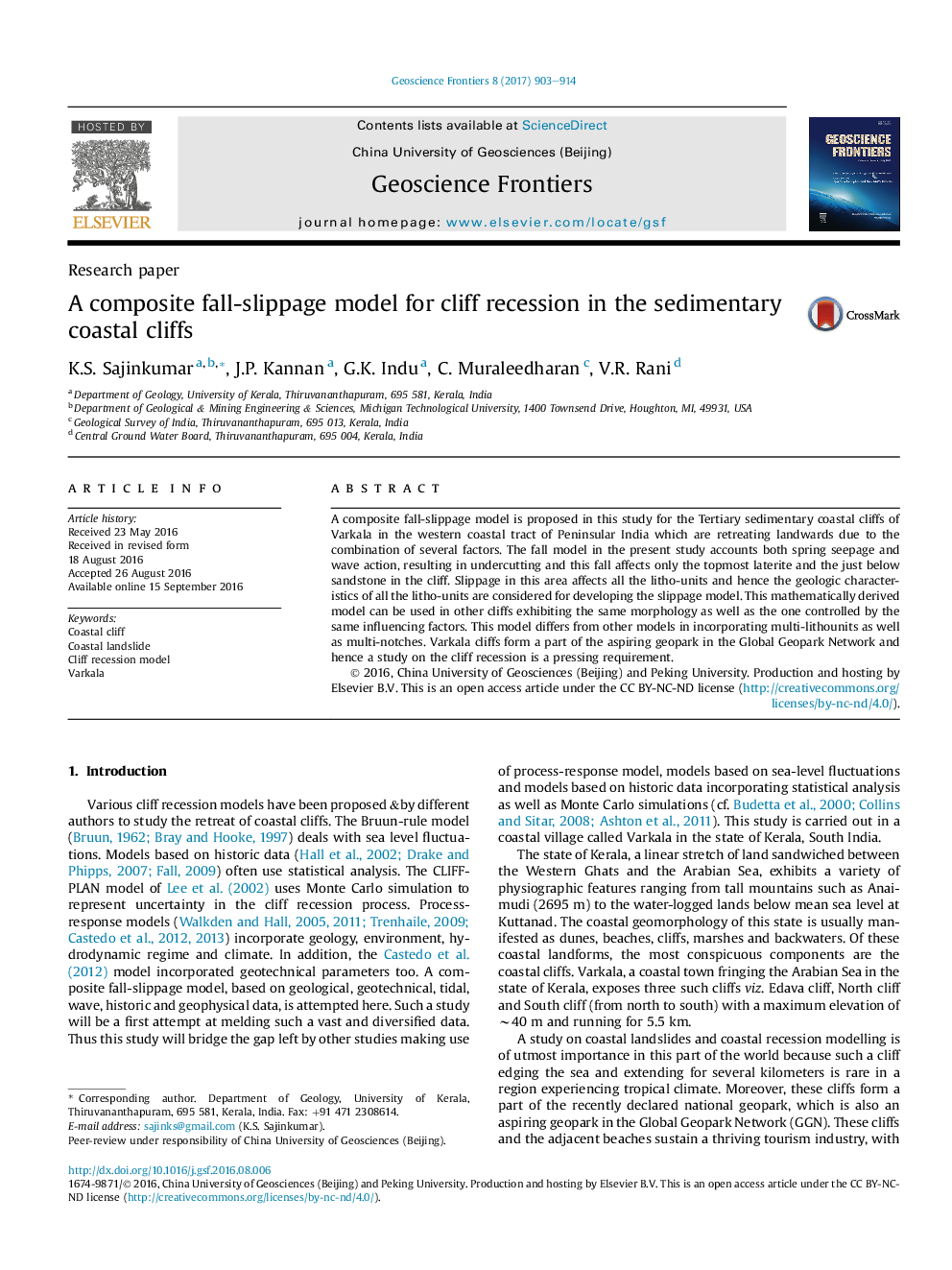| Article ID | Journal | Published Year | Pages | File Type |
|---|---|---|---|---|
| 5780258 | Geoscience Frontiers | 2017 | 12 Pages |
â¢The study was in a sedimentary coastal cliff, declared as a National Geopark.â¢A composite fall-slippage model is proposed.â¢This model incorporates geologic, historic and climatic parameters.â¢This model depicts both fall and slippage together.â¢Such a study is a pressing requirement in this tourist village.
A composite fall-slippage model is proposed in this study for the Tertiary sedimentary coastal cliffs of Varkala in the western coastal tract of Peninsular India which are retreating landwards due to the combination of several factors. The fall model in the present study accounts both spring seepage and wave action, resulting in undercutting and this fall affects only the topmost laterite and the just below sandstone in the cliff. Slippage in this area affects all the litho-units and hence the geologic characteristics of all the litho-units are considered for developing the slippage model. This mathematically derived model can be used in other cliffs exhibiting the same morphology as well as the one controlled by the same influencing factors. This model differs from other models in incorporating multi-lithounits as well as multi-notches. Varkala cliffs form a part of the aspiring geopark in the Global Geopark Network and hence a study on the cliff recession is a pressing requirement.
Graphical abstractDownload high-res image (281KB)Download full-size image
